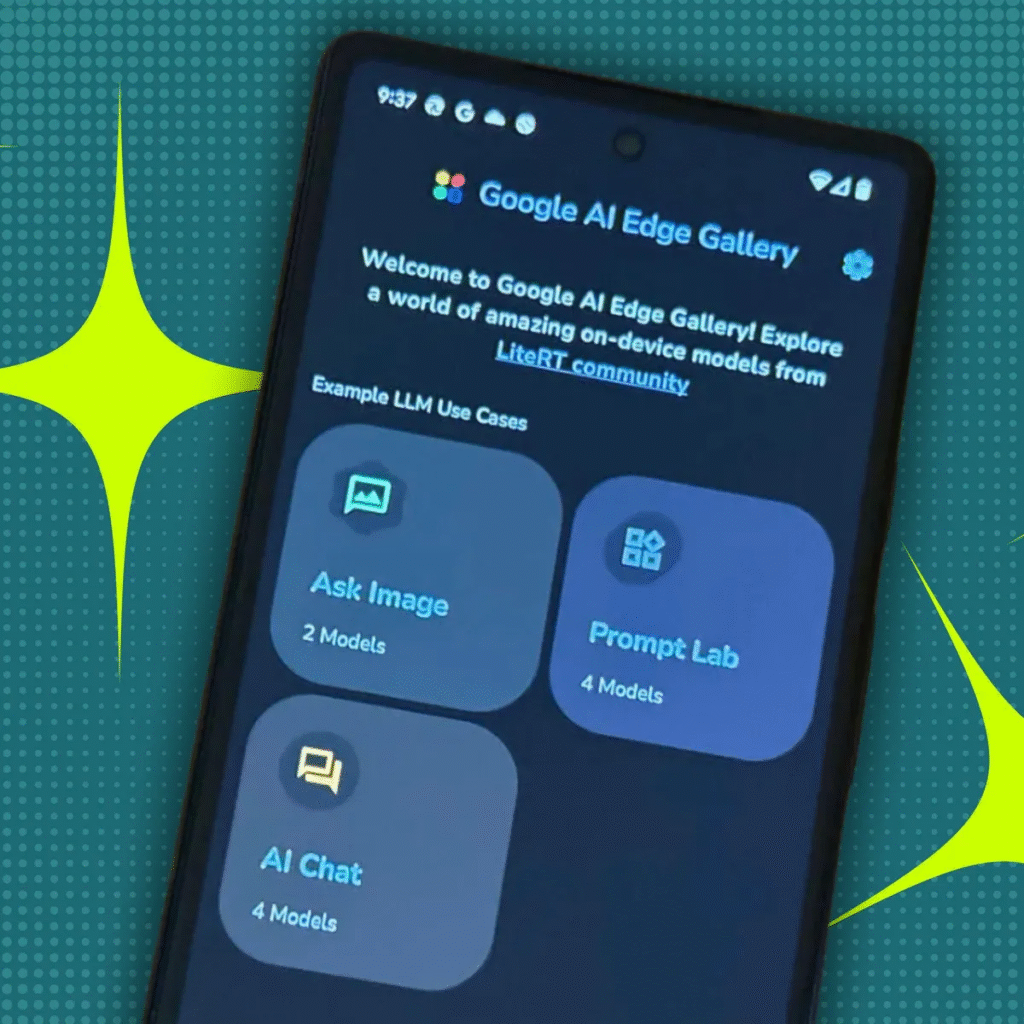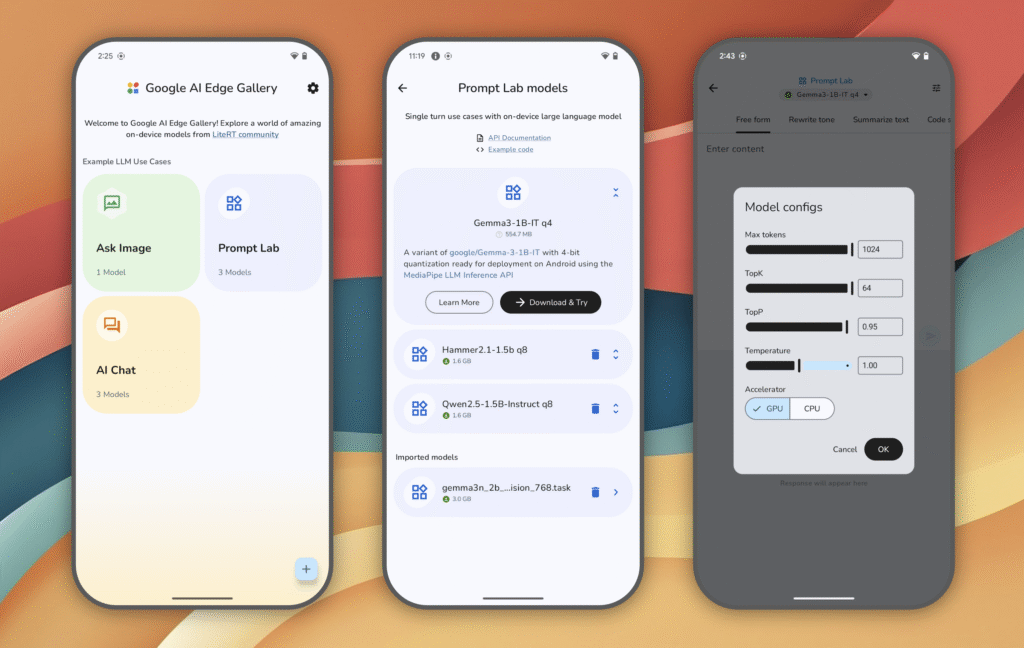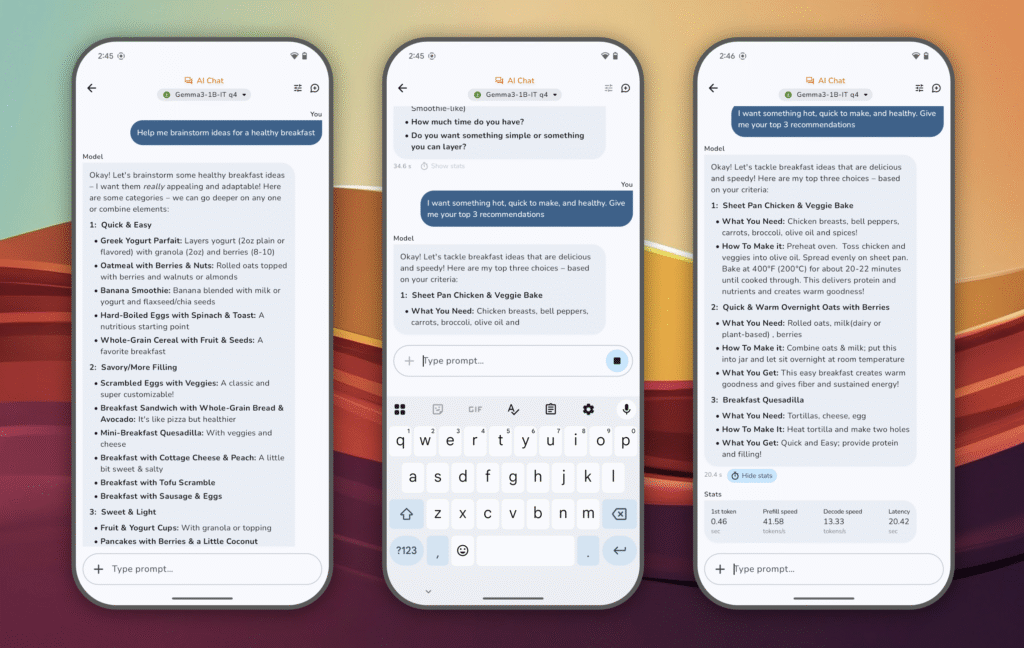
Google has quietly revolutionized mobile AI with the launch of Google AI Edge Gallery, an experimental application that fundamentally changes how we interact with artificial intelligence on our smartphones. Unlike traditional AI services that rely on cloud computing, this innovative app brings the power of generative AI models directly to your device, enabling completely offline AI experiences.
What is Google AI Edge Gallery?
Google AI Edge Gallery is an experimental Android application (with iOS version coming soon) that allows users to download, install, and run various open-source AI models directly on their mobile devices. The app serves as a showcase for on-device machine learning and generative AI use cases, putting cutting-edge AI capabilities literally in the palm of your hand.
The application builds on Google’s robust LiteRT platform (formerly TensorFlow Lite) and MediaPipe frameworks, which are specifically optimized for running AI models on resource-constrained mobile devices. This technical foundation ensures that powerful AI models can operate efficiently even on smartphones with limited processing power.
Key Features and Capabilities
Complete Offline Functionality
The most compelling feature of AI Edge Gallery is its ability to run entirely offline once models are downloaded. Users can engage with AI models without any internet connection, ensuring complete privacy and functionality regardless of network availability. All processing happens locally on the device, eliminating concerns about data being sent to external servers.
Diverse Model Selection
The app provides access to various openly available AI models from Hugging Face, a popular AI development platform. Users can experiment with different models including Google’s own Gemma 3 model, a compact 529-megabyte language model that demonstrates impressive capabilities despite its relatively small size.
Multiple AI Use Cases
AI Edge Gallery supports a wide range of AI applications including:
- Text generation and conversation
- Image analysis and recognition
- Creative content creation
- Question answering systems
- Prompt experimentation
Framework Compatibility
The system supports models from multiple machine learning frameworks, including JAX, Keras, PyTorch, and TensorFlow, providing developers and users with extensive flexibility in model selection.
Technical Architecture
LiteRT and MediaPipe Integration
The app leverages Google’s LiteRT platform, which is specifically designed for mobile AI deployment. This framework ensures optimal performance on mobile hardware while maintaining model accuracy and functionality.
Hardware Requirements
Running AI models locally requires capable hardware. The app is designed to work with modern Android devices that have sufficient processing power and memory to handle AI computations. Users with older or less powerful devices may experience limitations in model performance or availability.
Model Management
The application includes sophisticated model management capabilities, allowing users to download, organize, and switch between different AI models based on their specific needs and use cases.

Privacy and Security Advantages
Data Privacy
One of the most significant advantages of AI Edge Gallery is its approach to data privacy. Since all processing occurs locally on the device, user data never leaves the phone. This stands in stark contrast to cloud-based AI services where queries and responses are processed on remote servers.
No Internet Dependency
Once models are downloaded, users can interact with AI capabilities without any internet connection. This feature is particularly valuable in areas with poor connectivity or for users who prioritize privacy and want to avoid sending data over networks.
Current Availability and Access
Platform Availability
Currently, Google AI Edge Gallery is available for Android devices, with an iOS version planned for future release. The app is not yet available on the Google Play Store and must be downloaded from alternative sources like GitHub or APK distribution platforms.
Installation Process
Users interested in trying the app can download it from:
- GitHub repository (google-ai-edge/gallery)
- APK distribution sites like Uptodown
- Direct download from Google’s experimental app distribution channels

Use Cases and Applications
Personal AI Assistant
Users can leverage the app as a personal AI assistant that works completely offline, helping with writing tasks, answering questions, and providing creative suggestions without requiring internet access.
Educational Tool
The app serves as an excellent educational platform for understanding how AI models work, allowing users to experiment with different prompts and observe how various models respond to similar inputs.
Creative Applications
Artists, writers, and creative professionals can use the app for inspiration, idea generation, and creative problem-solving, all while maintaining complete privacy over their creative processes.
Development and Research
Developers and researchers can use AI Edge Gallery to test and evaluate different AI models in real-world mobile environments, helping them understand the capabilities and limitations of on-device AI.
Limitations and Considerations
Hardware Requirements
The app requires relatively modern and powerful Android devices to function optimally. Older smartphones may not have sufficient processing power or memory to run larger AI models effectively.
Model Size and Storage
AI models can be quite large, with some requiring hundreds of megabytes of storage space. Users need to consider available device storage when downloading multiple models.
Processing Speed
While on-device processing provides privacy advantages, it may be slower than cloud-based alternatives, especially for complex queries or larger models.
Limited Model Selection
Currently, the app focuses on models available through Hugging Face, which may not include all the latest or most advanced AI models available through commercial cloud services.
Future Implications
Mobile AI Revolution
Google AI Edge Gallery represents a significant step toward democratizing AI access and reducing dependence on cloud-based services. This approach could reshape how we think about mobile AI applications.
Privacy-First AI
The app demonstrates that powerful AI capabilities don’t necessarily require sacrificing privacy, potentially influencing how other companies approach AI service delivery.
Edge Computing Advancement
The success of this application could accelerate the development of edge computing solutions and more powerful mobile processors designed specifically for AI workloads.
Getting Started
Installation
To try Google AI Edge Gallery, users should visit the GitHub repository or download the APK from trusted sources. The installation process requires enabling installation from unknown sources on Android devices.
First Steps
Once installed, users can browse available models, download their preferred AI models, and begin experimenting with various AI capabilities. The interface is designed to be user-friendly, making it accessible to both technical and non-technical users.
Best Practices
For optimal experience, users should ensure their device has sufficient storage space, close unnecessary apps before running intensive AI tasks, and experiment with different models to find those that work best for their specific use cases.
Conclusion
Google AI Edge Gallery represents a fascinating glimpse into the future of mobile AI, where powerful generative models can run entirely on personal devices without compromising privacy or requiring constant internet connectivity. While still experimental, the app demonstrates the potential for truly personal, private, and powerful AI assistants that respect user privacy while delivering impressive capabilities.
As mobile hardware continues to improve and AI models become more efficient, applications like AI Edge Gallery may become the standard for how we interact with artificial intelligence, prioritizing user privacy and offline functionality while maintaining the power and versatility that make AI so compelling.
The app is currently free and open-source, making it accessible to anyone interested in exploring the cutting edge of mobile AI technology. For users concerned about privacy or those who frequently work in areas with limited internet connectivity, Google AI Edge Gallery offers a compelling alternative to traditional cloud-based AI services.
